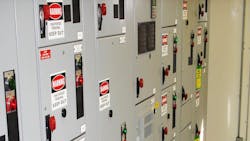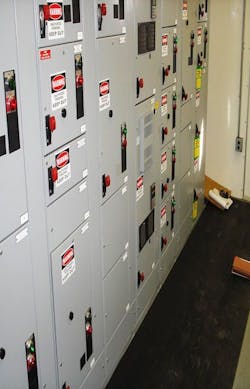Industrial Building and Structure Disconnecting Means
The typical petrochemical plant has a distribution voltage of 15kV to 35kV (medium voltage). The outside medium-voltage feeders from the main substation to each of the distribution substations — or power distribution centers as they are sometimes referred to — are typically supplied by a breaker/fused disconnecting means in the main substation.
It is a well-established general rule in the National Electrical Code (NEC) that each building or structure must have a disconnecting means to de-energize the power to the building or structure. NEC Sec. 225.31 states that means shall be provided to disconnect all ungrounded conductors that supply or pass through the building or structure. The rule is very clear and easily understood. The building or structure (e.g., substation) must be able to be disconnected from all sources of power for safety reasons.
For distribution substations, many times the medium voltage feeds step-down transformers outside the building or enclosure of the substation, which, in turn, feed switchgear or motor control centers (MCCs) with a reduced voltage inside the substation. Many times, these systems are double-ended with more than one source feeding the substation equipment. The result is there are many instances in industrial plants where the distribution substations do not have one centralized disconnecting means for a substation. In fact, in many large substations, it is possible to have a dozen or more sources entering the structure or building. So, the question is: Does this violate NEC requirements?
The location of the disconnecting means required in Sec. 225.31 is covered in Sec. 225.32. The general rule is to locate the disconnecting means either inside or outside the substation. The issue in industrial settings is this typically isn’t practical. Section 225.32, Exception No. 1 provides relief from the general rule for industrial facilities under single management and allows the breakers/fused disconnects back at the main substation to be used as the disconnecting means as long as the rest of the requirements are met. This requires having documented safe switching procedures and qualified persons monitoring the installation.
Even though this particular exception has been in the NEC for many years, we’ve witnessed a general trend in the NEC during the past two decades to address more of the situations we encounter in the industrial world. Many will argue that supervised industrial locations are no different than say a commercial building or a dwelling unit, as electricity can be dangerous no matter the installation. What makes supervised industrial locations special cases is there are typically many licensed engineers and highly trained electrical technicians on staff that work on the same systems day in and day out and are familiar with all of the hazards involved.
© 2017 Fluor Corporation. All Rights Reserved.
About the Author
Eddie Guidry
Senior Fellow
Eddie Guidry is a senior fellow with Fluor Enterprises, Inc., Sugar Land, Texas. He is highly skilled in electrical and control systems for industrial construction, design, and engineering (both domestic and abroad). The majority of Eddie’s 38 years of experience includes upstream and downstream portions of petrochemical plants and refineries. He is also heavily experienced in water and wastewater treatment facilities. Eddie is very active in the development of U.S. national (ANSI) and international codes and standards, and has been a principal member of the National Fire Protection Association (NFPA) National Electrical Code (NEC) committee since 1999 and NFPA’s National Advisory Committee on Electrical Safety Research since 2008. Eddie, who has also developed and conducted many electrical courses and seminars over the years, currently holds the corporate Master Electrician license for Fluor Corporation in the State of Texas and is also an ICC/IAEI certified electrical inspector.

